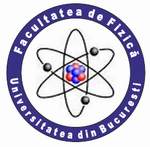| |
 |
UNIVERSITY OF BUCHAREST
FACULTY OF PHYSICS Guest
2025-10-05 22:30 |
 |
|
|
|
Conference: Bucharest University Faculty of Physics 2025 Meeting
Section: Nuclear and Elementary Particles Physics
Title:
Gamma spectrometric analasys of phosphogypsum stack in Turnu Măgurele
Authors:
Alexandru BRAGARIN(1,2), Octavian DULIU (2,3,4), Delia-Georgeta DUMITRAS (4), Aurora-Maruta IANCU (4)
*
Affiliation:
1)Horia Hulubei R&D Institute for Physics and Nuclear Engineering
2)University of Bucharest, Faculty of Physics, Doctoral School of Physics
3)University of Bucharest, Faculty of Physics, Department of Structure of Matter, Earth and Atmospheric Physics, Astrophysics
4)Geological Institute of Romania
E-mail
alexbragarin@gmail.com
Keywords:
Gamma Spectrometry, Phosphogypsum, Turnu Magurele, Radon, enviromental contamination
Abstract:
Phosphogypsum (PG) is a calcium sulfate hydrate, formed as a by-product of fertilizer production, particularly phosphoric acid, from phosphate rock. The main component of PG is gypsum (CaSO¬4.2H2O). Gypsum is widely used material in the construction industry, phosphogypsum is usually not used, but is stored indefinitely because of its weak radioactivity caused by the presence of naturally occurring uranium (U) and thorium (Th), and their daughter isotopes radium (Ra) and radon (Rn). Otherwise PG, also includes several valuable components like calcium sulphates and elements such as silicon, iron, titanium, magnesium, aluminum, and manganese.
In Romania, communist industrialization has generated plenty of environmental and health costs. The processing of phosphate minerals has led to the production of phosphogypsum. At this moment, there are four phosphogypsum stacks in Romania, located in Bacău,Năvodari, Turnu Măgurele and Valea Călugărească.
To assess the environmental contamination with radioactive residues of Turnu Magurele fertilizer plant, 10 samples collected from the entire PG stack, were analyzed using high-resolution gamma-ray spectroscopy. The analysis evidenced Ra-226 as the major radioactive element with a specific activity between 75.48±7.1 Bq/Kg and 884.99±76.15 Bq/Kg. X-ray fluorescence (XRF) was also used for analyzing the samples, which determined mass fractions of major elements such as MgO (1.3 ± 1.24 %), SiO2 (2.44 ± 0.24 %), P (1.86 ±0.06 %), Ca (54.02 ± 0.12 %) and Sr (0.51 ± 0.005 %), S (39.67 ± 0.25 %). In one sample (PFG 11), there were traces of Al2O3 (1.20 ± 0.44 %). The effective dose for gamma emitter radionuclides, was also calculated using the activities of K-40,Ra-226,Pb-210,Bi-214, with values between 0.33 mSv/year and 3.91 mSv/year, pointing towards a significant threat for the environment as well as for the population.
References:
1)Ana-Maria Blebea-Apostu et al;The Bacau (Romania) phosphogypsum stacks as a source of radioactive threat: a case study
2)Hanan Tayibi et al;Environmental impact and management of phosphogypsum
3)Iancu Aurora Măruţa et al;MINERALOGICAL AND GEOCHEMICAL PECULIARITIES OF PHOSPOGYPSUM FROM TURNU MĂGURELE (ROMANIA)
Acknowledgement:
I wish to give my thanks to the Horia Hulubei R&D Institute for Physics and Nuclear Engineering, for allowing me to pursue my doctorate studies, while also providing me with the necessary infrastracture to do the research. I also wish to give my thanks to my colleagues, that helped with research materials and advice: Ana-Maria Blebea Apostu, Bogdan Sorin Dumitru and KeunHwan Kim.
|
|
|
|

